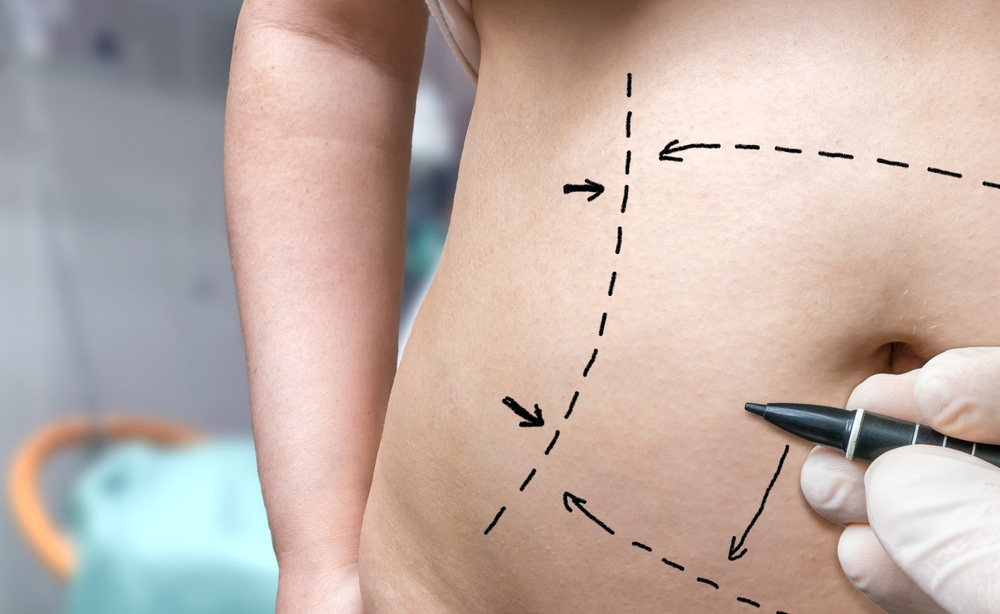There are a number of reasons why someone might choose to undergo surgery to remove excess skin and fat from their abdomen – also known as a tummy tuck.
Perhaps they have recently lost a significant amount of weight and now have loose, saggy skin around their midsection. Or, they may have had children and be dealing with stubborn abdominal tissue that won’t respond to diet and exercise. No matter the reason, a tummy tuck can be an effective way to achieve a flatter, firmer stomach.
But what exactly is involved in this type of surgery? In this blog post, we’ll take a look at the different steps involved in a tummy tuck so that you can make an informed decision about whether or not it’s right for you.
What is a tummy tuck and why might someone want one?
A tummy tuck, or abdominoplasty, is a surgical procedure that helps to reshape and firm the abdomen by removing excess fat and skin. The procedure also often includes tightening of abdominal muscles to create an attractive appearance in the patient’s midsection area.
Those interested in obtaining a tummy tuck may come from varied backgrounds and age groups. Some people are looking for ways to reclaim their post-pregnancy figure while others might feel they have become dissatisfied with changes in their physique due to age or significant weight loss.
With an experienced board-certified plastic surgeon, patients can expect both a feeling of satisfaction with the overall outcome as well as improved body health and self-confidence.
The different types of tummy tucks – full, mini, extended, etc.
A tummy tuck is a major surgery that results in improved abdominal contours by removing excess skin and fat from the midsection. There are several different types of tummy tucks available to patients, depending on their desired outcome.
- Full Abdominoplasty: Also known as a traditional tummy tuck, a full tummy tuck involves an incision made on the lower abdomen.
- Mini Abdominoplasty: Suitable for patients with minimal excess skin and fat below the navel, it involves a shorter incision.
- Extended Abdominoplasty: Extends the incision to address excess skin and fat on the hips or lower back. An extended abdominoplasty extends further around the sides and may be chosen for extreme cases of sagging skin or fat.
- Circumferential Abdominoplasty: Also called a belt lipectomy, it addresses excess skin and fat around the entire waistline, suitable for those who have lost significant weight.
- Fleur-de-Lis Abdominoplasty: Combines a vertical and horizontal incision, ideal for patients with significant excess skin and fat in both the horizontal and vertical directions.
Additionally, surgeons may offer liposuction in conjunction with a tummy tuck to further improve body contouring. It is important to speak with an experienced surgeon regarding which type of procedure would be most suitable.
The surgery itself – step by step
Surgery can be an intimidating process, but understanding each step of the process can help patients feel more in control and prepared. The first step is to make sure pre-operative tests are completed, including blood work.
This is followed by the preparation of the individual for the procedure itself – this includes completing any necessary paperwork and providing informed consent before proceeding. Next, anesthesia will be administered so that the patient’s comfort is ensured during the surgery.
Finally, post-operative care helps promote proper healing and recovery. An experienced medical team advocating for each patient ensures that all facets of these steps are accomplished appropriately for optimal success.
 Tummy Tuck recovery time and post-operative care
Tummy Tuck recovery time and post-operative care
After any surgery, the body needs time to recover. Proper post-operative care can go a long way in supporting the body’s healing process. It is important to follow aftercare instructions closely and understand how each step taken impacts recovery time.
Patients should listen to their healthcare provider for individualized advice and guidance on when it is safe to return to activities such as strenuous exercise, contact sports, and so forth. Recovery from surgery requires patience, but with the right post-operative care plan, you can be back on your feet in no time.
Risks and complications associated with the surgery
Surgery is a complex medical procedure and while it can offer great benefits, there are potential risks and complications that should be taken into consideration. Things such as adverse reactions to anesthesia or infection due to incisions must all be taken into account by patients before proceeding with any surgical intervention.
While these risks are not common, it is important for physicians to be well aware of them in order to minimize the likelihood of these risks. Understanding the complications associated with surgery can give patients a better chance at successful operations and healthy outcomes.
Why did you choose Maya Medical for this surgery?
Maya Medical is an established and trusted company that provides a variety of services for a wide range of patients. Our highly skilled team of doctors, nurses, and other healthcare professionals have years of experience in performing safe and successful surgeries.
Additionally, Maya Medical offers the latest technology and techniques to ensure that all procedures are completed as safely and successfully as possible. From start to finish, Maya Medical offers personalized care and attention from a knowledgeable team of professionals that are dedicated to providing the best possible experience for our patients.
By choosing Maya Medical for your surgery, you can be confident that you will receive the highest quality of care available.
A tummy tuck is a popular cosmetic procedure that can give patients a more toned and tight abdomen area. There are different types of tummy tucks, which will be determined by the surgeon during the consultation process. The surgery itself is relatively straightforward, but it is important to follow all post-operative care instructions to ensure a successful recovery.
Risks and complications associated with the surgery are rare but should be discussed with your surgeon prior to undergoing the procedure.

